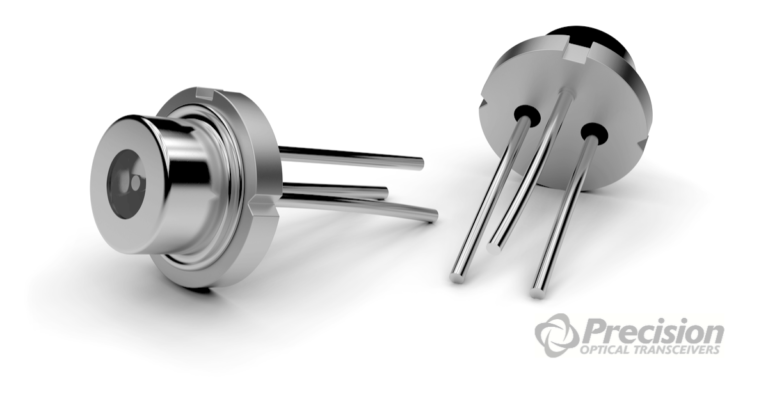
Laser Diodes, Modulation and Optical Communication

Along with optical fiber and an optical receiver, one of the key components of any optical fiber communication system is the optical transmitter. Used to convert an electrical signal into an optical signal, the transmitter commonly takes the form of an LED, or a laser diode — a semiconductor device with a laser beam created at its junction.
The capabilities of the transmitter are largely dependent on its design. LEDs, which produce incoherent light with a wide spectral width, are inefficient and subject to dispersion when transmitted over fiber; however, the simple design and low cost makes them suitable for short-distance, low-speed applications, such as local area networks (LANs). They have a range of around a few kilometers and bit rates of 10 to 100 Mb/s. Similar cost with improved functionality is offered by vertical-cavity surface-emitting lasers (VCSELs), a laser diode type that in many areas has superseded LEDs.
For other types of fiber optics applications, a more robust type of laser diode may be required. One of the most common types in use is the distributed feedback laser (DFB), which offers coherent light with a narrow spectral width. Its directional output is readily coupled into fiber, and its lesser degree of dispersion is well-suited to longer-distance, higher-speed applications.
In order to transmit information, the light output from any type of transmitter must be manipulated. Laser diodes can be directly modulated by application of current directly to the device; a drawback of this approach, however, is the possibility of a signal-degrading phenomenon, known as a “chirp,” that is particularly problematic when transmitting data over long distances. As a result, directly-modulated laser diodes (DMLs) are best suited for ranges from 2 to 10 km and speeds of 25 Gb/s or less.
For longer range and higher speed, an external modulation approach is applied. This involves continuous wave transmission of the laser beam and voltage on/off signals applied to an electro-absorption modulator (EAM). EAMs are well-suited for use in fiber optic communications because they can operate at low voltages and very high speeds, and they also produce modulation bandwidths of tens of gigahertz. They are typically made in the form of waveguides — structures that, like optical fibers themselves, are designed to conserve energy by restricting light wave expansion.
This principle also can be applied within a photonic integrated circuit in order to produce an externally modulated laser (EML). This type of device combines an external modulator with a distributed feedback (DFB) laser diode on a single chip.
Optical transceivers, which combine both transmitter and receiver into a single housing, may also be designed with DML or EML optics. For more information about the full range of optical transceivers, visit Precision Optical Technologies or contact our team of experts.






